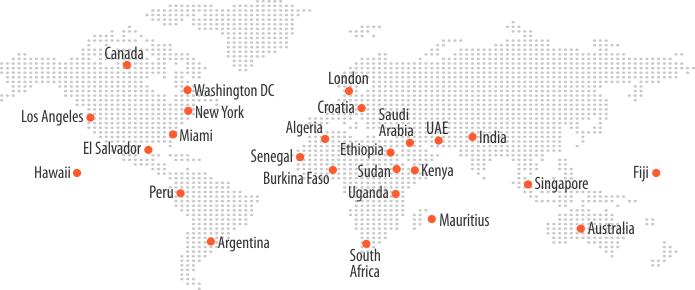Beyond Boundaries: Generative AI’s Role in Telecom Transformation

Generative AI is empowering telecommunication to create innovative and effective connectivity solutions at a rapid pace. Through data-driven learning and content creation this technology is defining a new frontier of innovation as it connects telecom solutions with artificial intelligence systems. AI adoption continues to rise as experts forecast worldwide telecom industry revenues will reach $13.4 billion by 2027.
Exploring Generative AI: Transforming Industries with Innovation
The analysis of data reveals patterns which lead generative AI models to generate new outcomes. Organizations employ generative AI technology to automate single-purpose tasks to free up their workers to assume strategic responsibilities. According to McKinsey AI technology deployed in businesses results in a 20–25% rise in productivity levels. Through this technology organizations achieve better operational efficiency along with economic savings and innovative solution development.
Generative AI’s Impact on Telecom
Generative AI technologies optimize telecom network management through the analysis of enormous dataset patterns that aid in issue prediction. A proactive approach using this technology helps to minimize downtime problems while improving system performance to maintain satisfying customer experience. The integration of AI into telecom sector offerings reveals that 80% of telecom organizations experience both superior service dependability and lowered operational costs. Generative AI facilitates rapid, customer-driven telecom operations through network service improvements, which lead to industry advancements.
What is Generative AI and its Importance for Telecom?
Recent developments in animated artificial intelligence represents a category which produces new content. It learns through processing data which goes beyond analysis of available information. Through the acquisition of learned information Generative AI produces texts, musical pieces, architectural solutions, and other deliverables.
Networks in telecom have started leveraging this technology to establish connections which enhance subscriber experiences. TELCO networks gather substantial data points involving customer usage statistics together with network performance analytics and device monitoring data. Generative AI processes such network data to extract patterns that result in network improvement, customer delight, and automated task completion.
Unlocking the Power of Generative AI
While its data interpretation capabilities deepen analysis, generative AI employs sophisticated algorithmic systems that generate autonomous content formats, such as textual materials and visual outputs. In sectors like telecommunications, this technology promotes innovation, expedites processes, and facilitates data-driven decision-making. Generative AI transforms data analysis and content creation by quickly analysing large datasets and producing precise results. Businesses can progress competitively in their market sector by using the technology to create differentiators in their service and communication content.
Transforming Telecom with AI-led Personalization and Automation
Telecom service providers improve user experiences by reducing tedious human labor and improving network performance using AI-enabled technologies. By improving service quality and increasing consumer satisfaction, this flexible technology helps react to market shifts.
Real-time network performance tracking using generative AI facilitates efficient problem solving, improves operations, and ensures continuous connectivity. In order to provide clients with faster and more targeted solutions for improved connectivity quality, the telecom sector uses AI to manage tailored services and predictive maintenance.
Applications of Generative AI in Telecom
Generative Artificial Intelligence transforms telecom through better customer interactions along with superior content management capabilities. This technology possesses learning knowledge-creation abilities which build next-level applications for customer experience. It also contributes to better network management and targeted marketing along with fraud detection.
Customer Experience
Virtual assistants implement artificial intelligence capabilities to supply individually tailored assistance through past communication memory retrieval and customer need forecasting. Modern technical solutions powered by artificial intelligence anticipate problems and speed up responses to create better customer interactions.
Self-service options are also improving. AI-powered chatbot systems automatically resolve basic inquiries while helping users solve technical problems. They also provide advice for selecting optimal plans thus enabling time-saving interactions for customers.
Network Optimization
AI monitoring of network activity continuously tracks operational metrics to detect emerging pattern sequences for upcoming problems, which will affect users. Fixing traffic distribution patterns and minimizing system downtimes are some of the tangible benefits of big data AI analysis.
5G network deployment and maintenance depend heavily on AI technology for automated process execution and network optimization thus delivering a seamless experience for users.
Content Delivery
As streaming platforms expand alongside gaming and video calls, generative artificial intelligence delivers quick and dependable content delivery. AI understands user demand patterns to move content locations which results in lower buffering durations and minimized lag.
Predictive capabilities enable content delivery networks (CDNs) to optimize their preparation systems so users experience better results in heavy traffic situations such as virtual reality platforms.
Fraud Detection
Generative AI protects telecom security through its ability to identify untypical patterns alongside unauthorized access attempts together with fraudulent activities. Artificial Intelligence enabled fraud detection outperforms standard security protocols to provide strengthened telcos operations while guaranteeing better safety measures.
Challenges and Ethical Considerations
Generative AI technology is transforming the telecom sector yet brings uncertainties with ethics along with its execution. Be it data privacy risks or building ethical AI frameworks, there are many challenges that a telecom service provider has to face with generative AI.
Risks of Bias in AI Models
Since AI learns from data, unfair biases in the data may cause AI systems to act in a biased manner. Such tactics would lead to erroneous fraud alert systems and imbalanced customer support judgments for telecom companies. Biased datasets contain patterns that cause AI systems to refuse services that they ought to offer to customers.
Diverse non-stereotypical training datasets that reflect a wide range of demographics are necessary to remove biases from AI algorithms. In order to identify bias and adopt corrective actions over time, standardized testing and scoring frameworks permit impartial third-party assessments and ongoing monitoring.
Regulatory Compliance and Data Privacy Concerns
Telecom companies must treat customer sensitive information with strict privacy protocols because they process such enormous volume of personal data. The implementation of AI-powered services requires telecom firms to meet GDPR and CCPA requirements for handling customer data in a responsible manner.
Generative AI technology challenges data control rights while creating questions about user permission and system clarity. Advising clients about the course of their data usage in AI model preparation processes remains important. When telecom companies achieve privacy protections alongside their AI progress they can establish trust in their AI deployments.
Managing the Balance Between Automation and Human Jobs
The use of AI-driven automation systems transforms regular operations into automated processes leading to employment uncertainty. Telecom providers need to empower employees to partner with AI systems in tasks where subjective decision-making or emotions or creativity matters.
Basic queries get managed by AI chatbots yet complex customer issues require human agents to resolve them. Telecom companies can deliver improved customer interactions when they build proficient professional competencies in their employees to adapt to AI-dominated work environments.
Conclusion: Telecom’s Future with Generative AI
The upcoming years will mark a noticeable shift because of telecom’s robust connection with generative AI. AI technologies enable telecom service providers (TSP) to personalize their services and upgrade their network capabilities and automate telecom operations. The combination between AI technology and telecoms will create remarkable development opportunities for telecom providers. Generative AI can tailor content or solutions to individual preferences or needs of customers. They will be able to experience improved service while backend operations become simpler.
Generative AI’s Transformative Potential
The telecom industry experiences a revolution through generative AI technologies which deliver improved customer interactions together with network optimization capabilities and automated business processes. The system processes an extensive amount of data to forecast future patterns and optimize telecommunications operations throughout their value system. Telecom companies that welcome artificial intelligence solutions experience rapid adjustment to user expectations in a similar way to how cable TV and OTT evolved.
Why Telecom Companies Should Explore AI-Driven Innovations?
Telecom companies must champion AI solutions to maintain their industry position because this sector operates at high speed. TELCO companies which postpone the implementation of AI technologies face the risk of lagging behind more advanced market rivals.
Telecom providers and AI specialists need to work together as a partnership. Telecom innovation advances through open discussions followed by collaborative projects along with mutual expertise sharing is the need of the hour. Generative AI can prove to be a great boon to the telecom industry for assisting in brainstorming and creative problem-solving by generating new ideas, perspectives, and solutions.





